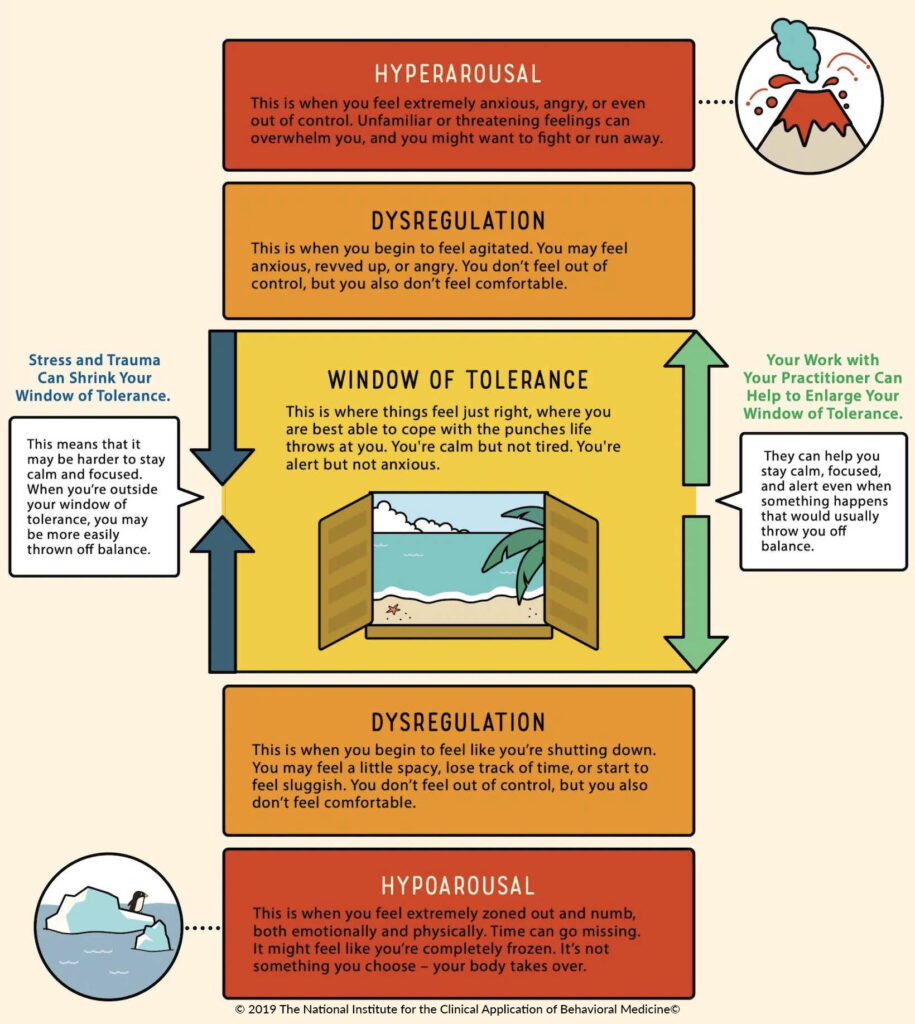The “window of tolerance,” introduced by Dr. Dan Siegel, refers to the zone where our nervous system can function optimally under stress. Within this window, we feel balanced and capable of processing life’s challenges. When stress pushes us outside this window, we enter survival states: hyperarousal (fight-or-flight) or hypoarousal (freeze).

Let’s explore these components in greater detail to better understand how they affect us—and what we can do about it.
Hyperarousal: The Over-Activated State
Hyperarousal occurs when your nervous system perceives a threat and shifts into fight-or-flight mode. This state is characterised by heightened alertness, anxiety, or anger. Physically, you might experience a racing heart, rapid breathing, or muscle tension.
From a neurological perspective, hyperarousal results from an over activation of the sympathetic nervous system. This system prepares your body to deal with danger by increasing energy and vigilance. While helpful in actual emergencies, staying in this state for extended periods can lead to chronic stress, burnout, mental health or physical health problems.
Common signs include:
- Fear
- Emotional overwhelm
- Angry outbursts
- Anxiety or Panic
- Hypervigilance
- Tight muscles
- Difficulty concentrating
How to regulate: Grounding exercises, such as deep breathing or progressive muscle relaxation, can help calm the nervous system and bring you back within your tolerance window.
Hypoarousal: The Under-Activated State
Hypoarousal is the opposite—when your nervous system perceives a stressor so overwhelming that it essentially “shuts down.” This is part of the freeze response, regulated by the parasympathetic nervous system.
In this state, you might feel emotionally numb, disconnected from yourself or others, or lethargic. While hypoarousal can serve as a protective mechanism in extreme stress, being stuck here can lead to depression or feelings of helplessness.
Common signs include:
- Fatigue or lack of energy
- Depression
- Difficulty engaging in daily tasks
- Emotional detachment or dissociation
- A sense of hopelessness or emptiness
- Numbness
- Flaccid body
- Inability to speak
How to regulate: Gentle movement, engaging your senses, or connecting with supportive people can stimulate your system and bring you back into balance.
Why Understanding This Matters
When you recognise where you are on the spectrum—hyperaroused, hypoaroused, or within your window—you can take steps to regulate yourself and build resilience. Exploring this concept with your counsellor deepens your ability to stay grounded, even during challenges, paving the way for greater peace and emotional balance.
Whether you’re navigating stress, seeking better emotional balance, or simply curious about how to connect with your inner calm, this is your opportunity to take meaningful steps toward lasting change. You don’t have to feel stuck in overwhelm or shutdown. With simple, actionable techniques, you can regain control and start living with greater ease and resilience.
Start your journey toward emotional freedom today—download these resources or book a 1:1session with Rebecca and begin exploring how your nervous system works for you, not against you!